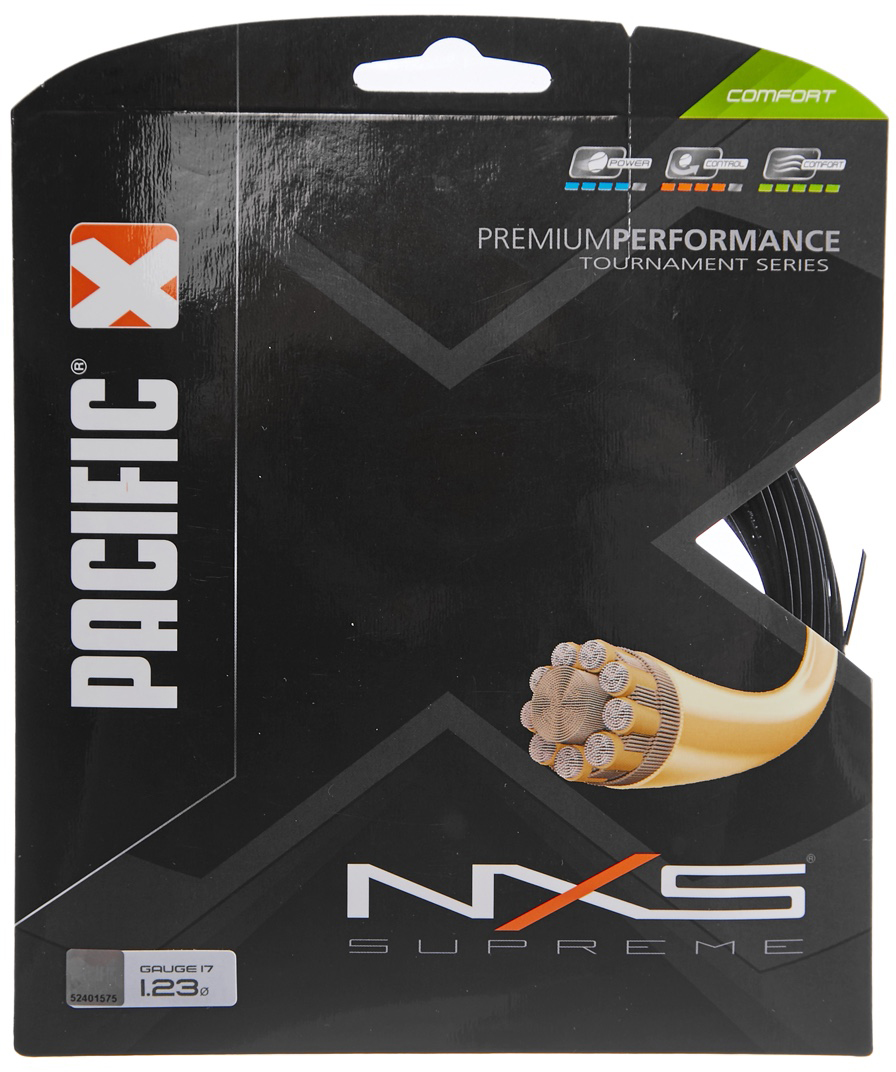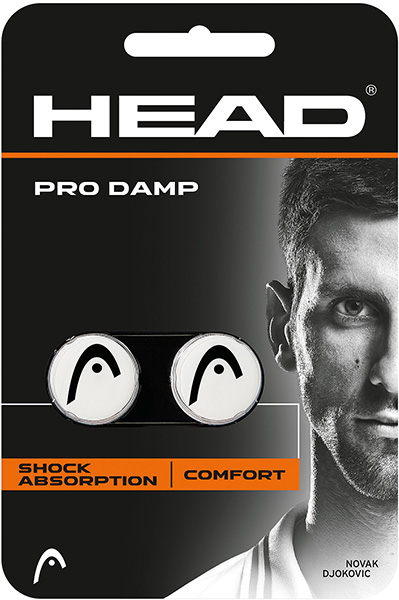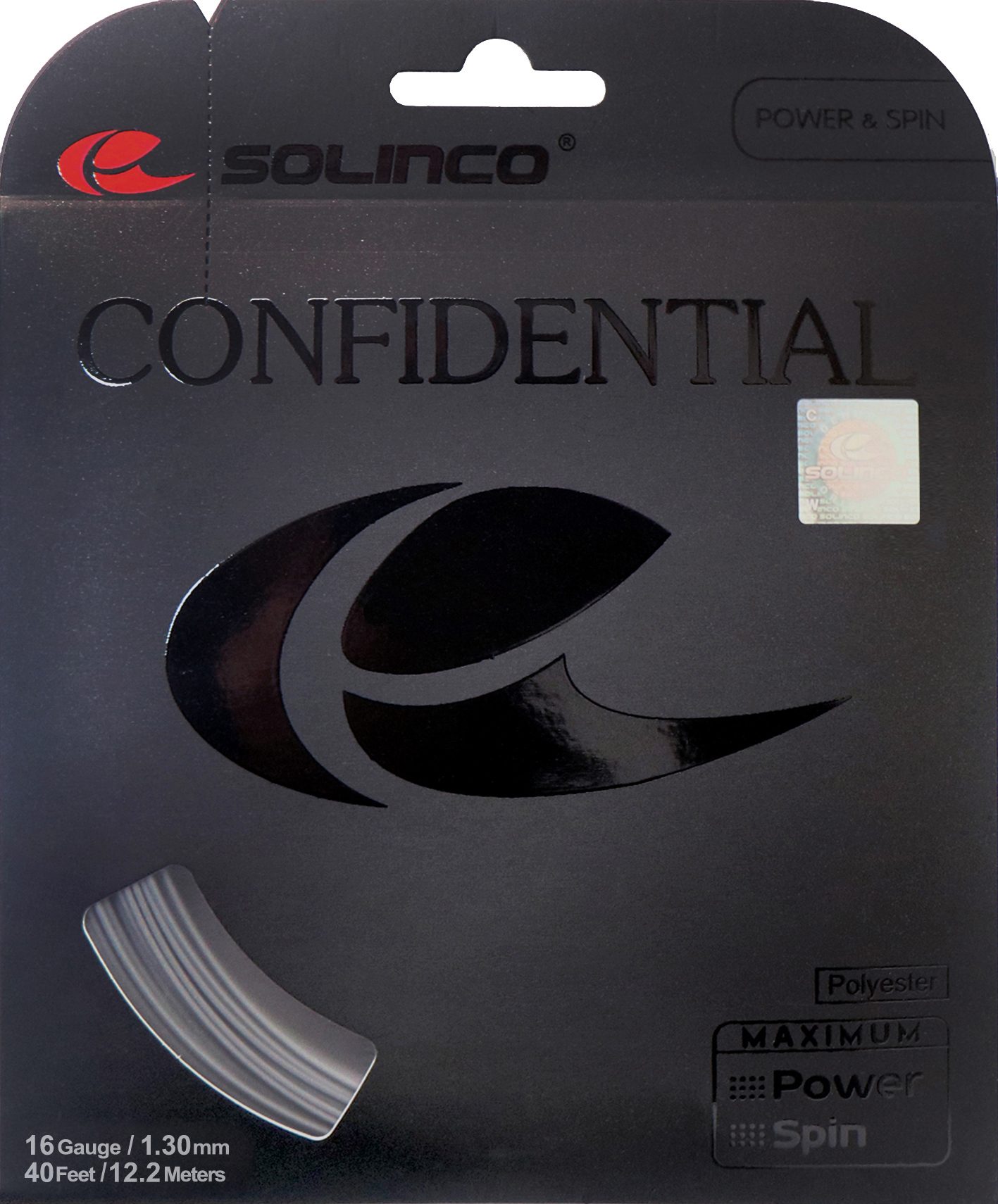23,90 €
Save 20%Each offer available in the Tennis Zone is an original product, coming directly from manufacturers or trusted distributors.

23,90 €
Save 20%
23,90 €
Elevate your game to supreme heights with the Pacific NXS Supreme tennis string. This high-grade racquet string provides a dynamic, powerful performance with an exceptional feel, promoting comfort and playability. It's more than just a string, it's a game changer!
Engineered for excellence, the Pacific NXS Supreme tennis string is composed of over 1200 multifilament fibres. These individual strands synergize to offer an unmistakable power in each and every stroke you make. With the ability to absorb and dampen negative vibrations, this string delivers uncompromised and consistent performance. A testament to remarkable innovation, the Pacific NXS Supreme is a racquet string that supports and enhances your game.
Comfortable on the hand, the Pacific NXS Supreme tennis string ensures an improved striking sensation. Its sleek, smooth profile regulates string movement, helping you maintain efficient control and accurate ball placement. Feel the difference on your racket and experience a smoother, more comfortable play like no other.

| Article number: | ST14988.1 |
|---|---|
| Color: | Black |
| Properties: | comfort dynamic feel |
| String length (m): | 12.2 |
| String profile: | soft |
| Structure: | multifilament |
Elevate your game to supreme heights with the Pacific NXS Supreme tennis string. This high-grade racquet string provides a dynamic, powerful performance with an exceptional feel, promoting comfort and playability. It's more than just a string, it's a game changer!
Engineered for excellence, the Pacific NXS Supreme tennis string is composed of over 1200 multifilament fibres. These individual strands synergize to offer an unmistakable power in each and every stroke you make. With the ability to absorb and dampen negative vibrations, this string delivers uncompromised and consistent performance. A testament to remarkable innovation, the Pacific NXS Supreme is a racquet string that supports and enhances your game.
Comfortable on the hand, the Pacific NXS Supreme tennis string ensures an improved striking sensation. Its sleek, smooth profile regulates string movement, helping you maintain efficient control and accurate ball placement. Feel the difference on your racket and experience a smoother, more comfortable play like no other.

| Article number: | ST14988.1 |
|---|---|
| Color: | Black |
| Properties: | comfort dynamic feel |
| String length (m): | 12.2 |
| String profile: | soft |
| Structure: | multifilament |
Each offer available in the Tennis Zone is an original product, coming directly from manufacturers or trusted distributors.
Sign up for the free newsletter and do not miss any promotions and news, as well as individual offers from our store.
Functional cookies are absolutely necessary for the functionality of the web shop. These cookies assign a unique random ID to your browser so that your unhindered shopping experience can be guaranteed over several page views.
Marketing cookies are used to display advertisements on the website in a targeted and individualized manner across multiple page views and browser sessions.
Tracking cookies help the shop operator to collect and evaluate information about the behaviour of users on their website.
These cookies are used to collect and process information about the use of the website by users, in order to subsequently personalise advertising and/or content in other contexts.
Service cookies are used to provide the user with additional offers (e.g. live chats) on the website. Information obtained via these service cookies may also be processed for site analysis.




